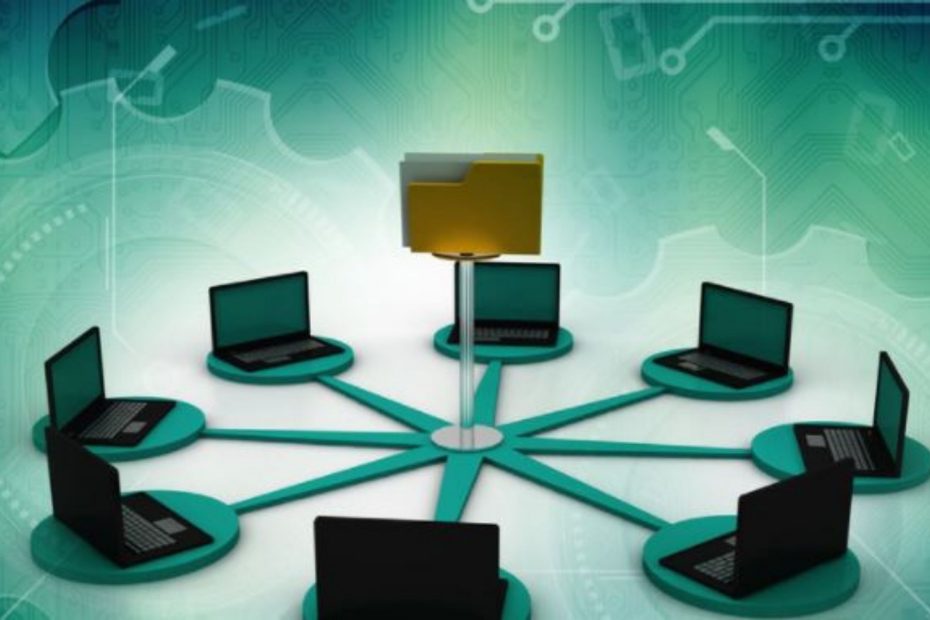Safe browsing should be one of the next biggest pushes that people learn about. The digital world is becoming closer ingrained with the real world all the time. P2P file sharing risks are very real, and can result in a number of real world problems if you’re not careful.
In an effort to help people understand online security better, this article is going to look at a number of P2P file sharing risks, and then give you a few tips on how you can get past them and share safely.
1. What is P2P file sharing?
To cover this basic idea first, P2P stands for peer-to-peer. It is when two or more people online decide to share information between themselves. Files are downloaded over the Internet from the host computer to the end user.
This can be done with any number of media file types: written documents, presentations, music, movies, pictures, and anything else that can be made digital.
2. What P2P file sharing risks exist?
While most think of P2P file sharing as risk free, this couldn’t be further from the case. Malware is a favorite delivery method of online attacks, and delivering it via P2P is surprisingly easy. Let’s break down what they can do.
The risk of malicious code
This P2P file sharing risk comes about due to how hard it is to truly figure out who is sharing the file. While sites like The Pirate Bay have trusted and regular uploaders, there are new users showing up all the time with “The Best Version” of a file.
 Hackers will be able to transmit any number of malware programs onto your computer via P2P, including:
Hackers will be able to transmit any number of malware programs onto your computer via P2P, including:
You must be aware of the P2P file sharing risks if you’re going to download from sites like this.
Exposure of personal information
 The secret risk of P2P file sharing is that you’re allowing people access to your computer. This can give them a chance to look at your sensitive information. Once your information is exposed in such a way it is impossible to tell who has access to it as the web is, well, really REALLY big and information spreads literally at the speed of light.
The secret risk of P2P file sharing is that you’re allowing people access to your computer. This can give them a chance to look at your sensitive information. Once your information is exposed in such a way it is impossible to tell who has access to it as the web is, well, really REALLY big and information spreads literally at the speed of light.
This leads to the risk of identity theft, and it’s not as fun as the movie Identity Thief would have you believe!
P2P file sharing can open you up to attack
One of the biggest P2P file sharing risks is a site asking you to open up certain ports of your firewall. This is done under the guise of allowing you to transmit files, but I wouldn’t trust this for all the Best 90s Dance Mixes in the world.
Opening your ports can lead to hackers having access to your computer. This is similar to the problem talked about above, but with more malicious intent as you could have been protected if you hadn’t open the port!
Fines and jail: The biggest P2P file sharing risks
 This isn’t the case with all P2P file sharing. There are perfectly legitimate uses for P2P file sharing, you likely do some every day through your email. My momma sent me a recipe last week via a PDF scan of a recipe card, as an example.
This isn’t the case with all P2P file sharing. There are perfectly legitimate uses for P2P file sharing, you likely do some every day through your email. My momma sent me a recipe last week via a PDF scan of a recipe card, as an example.
The downloading of pirated material, especially those with copyrights that are still valid, opens you up to all kinds of legal issues. You’ll likely get a DMCA notice first, but some P2P file sharers have found themselves in court. This is when P2P file sharing gets REAL.
3. How can you minimize these P2P file sharing risks?
Let’s look at the ways to minimize P2P file sharing risks in order:
- Stop using P2P: It’s the 100% foolproof plan. Not your cup of tea? Read on.
- Use an updated anti-virus program at all times: This is good for not just your P2P file sharing, but your general online experience as well. It will help block malicious code that you could download.
- Use a
VPN : This may be the most important thing you do to lower your P2P file sharing risks. Be sure to choose a VPN provider which allows P2P as some ban it from their servers. - Install a firewall: These programs block malicious traffic from entering your computer before they even get on it. Your system may already have it, be sure to check that it’s enabled. Most
VPN providers also have one, check to make sure it’s enabled!
As you can see, there are ways to protect yourself from P2P file sharing risks, but you have to take action before it’s too late.
#TBT to the days when file sharing required two people to be in the same room: http://t.co/plcGVdLdCu #CiscoMidsize pic.twitter.com/hKKZaVaAfY
— Cisco BeLux (@Cisco_BE) October 23, 2014
Feature image via jijomathaidesigner / Shutterstock
Monopoly image by Chris Potter.
